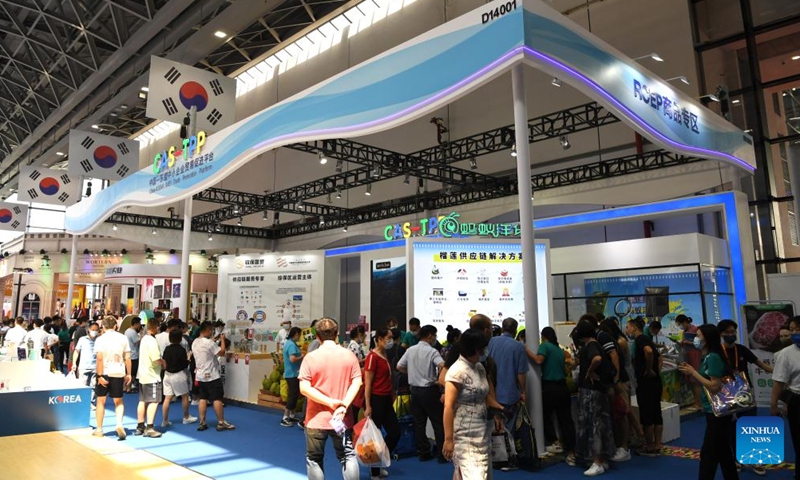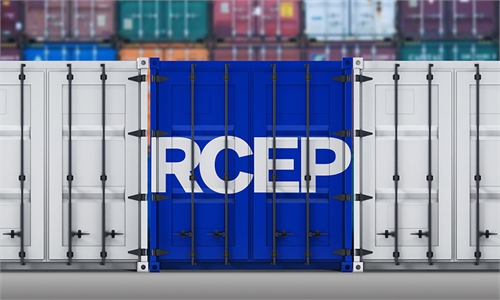
People visit the RCEP pavilions during the 19th China-ASEAN Expo in Nanning, south China's Guangxi Zhuang Autonomous Region, Sept. 18, 2022.Photo:Xinhua
China issued 4.89 million certificates of origin, commercial certificates and other certificates in connection with the Regional Comprehensive Economic Partnership (RCEP) from January to November in 2022, up 4.69 percent compared with the first half of the year, a spokesperson of the China Council for the Promotion of International Trade (CCPIT) said at a press conference on Tuesday.The certificates helped to cut about $9 million worth of tariffs on Chinese goods, reflecting the strong momentum for growth that the RCEP has played in supply chain stability between China and the RCEP members, experts said.
The total value of certificates of non-preferential origin issued by the national trade promotion system was $325.41 billion, a year-on-year increase of 17.26 percent. The value of preferential origin certificates was $55.97 billion, a year-on-year increase of 32.1 percent.
In the first 11 months of the year, 16,487 RCEP certificates of origin were issued to 3,062 companies with the overall value of $599 million.
It is estimated that a total of $9 million in tariff cuts or exemptions was achieved for Chinese products in RCEP import member countries, CCPIT spokesperson Yang Fan said at the press conference.
With tariff cuts and other trade facilitation measures, the RCEP has played a key role in bolstering economic and trade ties between China and the participating countries, particularly in Southeast Asia, where China's huge market and resilient supply chain have contributed to the regional economic recovery in the post-epidemic era, Song Wei, professor at the School of International Relations and Diplomacy, Beijing Foreign Studies University, told the Global Times on Tuesday.
In the first 11 months, China's total trade with ASEAN increased by 15.5 percent year-on-year, higher than the overall growth rate of China's foreign trade. China is still ASEAN's largest trading partner, and ASEAN's position as China's largest trading partner has been further consolidated.
"Trade between China and ASEAN continues to grow, which is conducive to the implementation of the RCEP by further reducing the cost of regional trade cooperation, promoting trade facilitation, and deepening regional industry and supply chain cooperation in the region and beyond," Song said.
Despite a resurgence of the COVID-19 epidemic and the complicated global economic situation, the RCEP continues to release dividends and help accelerate the upgrading of regional economic and trade cooperation, experts said.
The Asian Development Bank has raised its estimate of economic growth for Southeast Asia in 2022 from 5.1 percent to 5.5 percent, partially reflecting the RCEP's function in stimulating the regional economy, according to media reports.
Global Times

